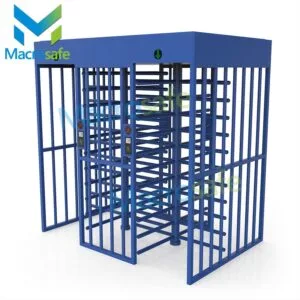Ensuring safety in construction sites is of the utmost importance to ensuring workers’ health and well-being and preventing accidents and injuries.
A comprehensive guide to construction site safety should detail the necessary precautions to take before commencing work and the measures to be taken while work is ongoing. The following are some of the ways to ensure safety in construction sites.
1. Conduct a thorough risk assessment
Before commencing work, a thorough risk assessment should be conducted. This involves uating the potential hazards and risks on the site and developing strategies to mitigate them.
Risk assessment should involve identifying the potential risks, uating the likelihood of their occurrence, and then planning the measures that would help to alleviate such risks.
This would help minimize accidents and ensure a safe working environment. The risk assessment results should be communicated to all workers and stakeholders.
2. Provide adequate PPE
Personal protective equipment (PPE) is essential for construction workers. PPE includes high-visibility clothing, hard hats, safety gloves, earplugs, goggles, and other protective gear.
The employer is responsible for providing the necessary PPE and ensuring workers are trained to use it effectively.
Employers should ensure that workers wear the appropriate PPE and that it is regularly checked to ensure it is in good condition.
3. Safety training and attendance for workers
Worker training is crucial in ensuring safety on construction sites. All workers should receive proper training on risk assessment, handling machinery, using PPE, and safe working practices.
This should be done before they begin work and should be ongoing. Employers should provide refresher training to workers to keep them updated on new safety procedures and best practices.
Install turnstile Doors and access control s at the gates of the construction site. This will not only prohibit outsiders from entering the site but also record workers’ entry and exit.
4. Use safe equipment
Unsafe equipment can cause injuries, so equipment used on construction sites must meet the necessary safety requirements.
If a machine is faulty, it should be repaired immediately or removed from use until it is fixed. Employers should also ensure that workers receive proper operating equipment training safely.
5. Follow safety protocols
There are specific safety protocols that should be followed on construction sites.
For example, scaffolding should be erected according to established guidelines, and workers should follow safe practices when working at heights.
Employers should ensure that these protocols are followed and that workers know the risks of not following them.
6. Regular safety audits
Employers should conduct regular safety audits to ensure that safety protocols are being followed and safety procedures are being adhered to on construction sites.
Audits can also help identify potential hazards previously overlooked or not identified through the risk assessment process.
7. Ensure proper first aid arrangements are made
Construction sites can be very hazardous environments, so it is important to have trained first aiders on site.
These first aid personnel must be trained in the specific hazards associated with the construction site’s activities and be available to address workers’ health and safety needs.
Adequate first aid arrangements should be provided, and first aid kits should always be fully stocked.
Conclusion
Safety should be the priority on construction sites. This includes conducting a thorough risk assessment, providing adequate PPE, training workers, using safety equipment, installing turn-style doors, following safety protocols, conducting regular safety audits, and ensuring proper first aid arrangements. Following these guidelines can minimize accidents and injuries, and workers can work safely and efficiently.

